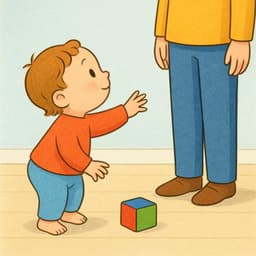Zorro, zorro, pide socorro.
SO-rro, SO-rro, PI-de so-KO-rro
Fox, fox, asks for help.
🔊 Listen & Practice
Start with slow speed to master pronunciation, then gradually increase to challenge yourself.
🎨 Visualization

This little fox needs help! Can you say this quickly to save him?
🎯 Pronunciation Focus
The Rolled 'rr' (vibrante múltiple)
/r/This is the classic trilled 'r'. To make it, let the tip of your tongue vibrate against the roof of your mouth, just behind your teeth, like a motor. It's the sound in 'perro' (dog) and is the main challenge in 'zorro' and 'socorro'.
The Soft 'r' vs. Rolled 'rr'
/ɾ/ vs /r/The word 'socorro' is a perfect mini-workout. It has a soft, single-tap 'r' first (so-co-ro), immediately followed by the strong rolled 'rr' (so-co-RRO). Feeling the difference between the tap and the roll is key.
The 'z' Sound (like 's')
/s/In Latin America and most of Spain, the 'z' sounds exactly like an 's'. Think 's' as in 'sun'. Avoid the buzzing sound of the English 'z' as in 'zoo'.
📝 Practice Breakdown
Start here. Focus on that rolled 'rr'. Try to get a good vibration going. Remember, the 'z' sounds just like an 's'.
Now for the tricky part. Feel the difference in 'socorro': the first 'r' is a quick tap, the 'rr' is a long roll. Tap, then roll. 'so-co-[tap]-o-[roll]-o'.
Key Words in This Tongue Twister:
📚 Background
This is a short, classic 'trabalenguas' that Spanish teachers and parents have used for generations. It's the perfect exercise for isolating and practicing the rolled 'rr', one of the most iconic sounds in the Spanish language.
❌ Common Pitfalls
Using the English 'r'
Mistake: "Pronouncing 'zorro' with the 'r' sound from the back of the throat, like in the English word 'roar'."
Correction: The Spanish 'rr' is all about the front of your mouth. The tip of your tongue needs to vibrate against the ridge just behind your top teeth. Think of it as a motor starting up, not a growl.
Rolling All the R's
Mistake: "Using a strong roll for both the 'r' and the 'rr' in 'socorro'."
Correction: Spanish is precise with its R's! The single 'r' in 'socorro' is just one quick tap of the tongue. The 'rr' is the full, sustained vibration. Differentiating them will make your Spanish sound much more natural.
🌎 Where It's Used
General Spanish
This tongue twister is universally known. While the pronunciation of 'z' is like 's' in the Americas and most of Spain, in some parts of Spain (like Madrid), it's pronounced like 'th' in 'think'. However, the main focus on the 'rr' sound is the same everywhere.
🔗 Related Tongue Twisters
The Fox Rescue Challenge
Say it five times in a row, getting faster each time! Imagine you're the fox and you really need help. Can you keep the 'rr' sound strong and clear without stumbling?
🏷️ Tags
Frequently Asked Questions
Why is the Spanish 'rr' so hard for English speakers?
It's a sound that simply doesn't exist in most English dialects! It requires training your tongue to vibrate in a way it's not used to. Think of it as a physical skill, like learning to whistle. Consistent practice is the only way to get it.
Any tips for learning the rolled 'rr'?
Yes! Try saying the English phrase 'butter-up' very quickly. The 'tt' sound you make is in the same spot as the Spanish 'r'. Start by practicing that quick tapping motion, and then try to blow air through it to create a vibration. It takes time, so be patient!


